
Rediscovering Japan

Rediscovering Japan
Travel (Kyoto Nishi Hongwanji area)

by tomizuta
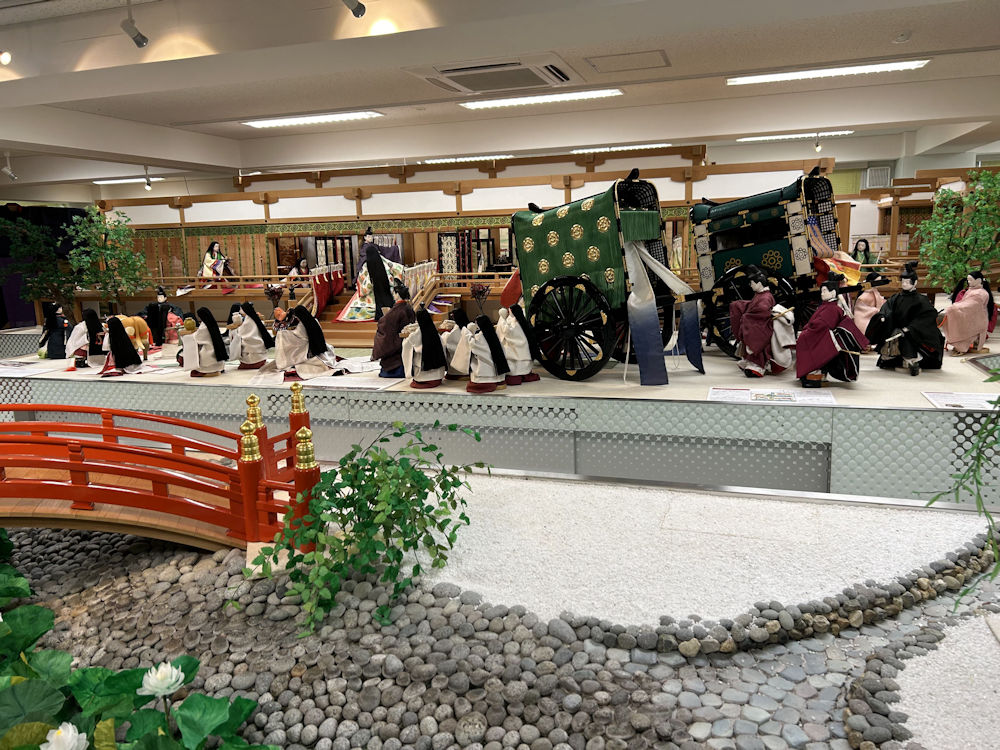
As the elevator doors opened, the splendid world of The Tale of Genji came into view.
I’ve covered a lot of prefectures, and am hopeful that I will be able to cover all 47 prefectures eventually. So it might seem odd that as of October 2024 (more than eight years since I opened this homepage) my website still hadn’t covered Kyoto Prefecture. The fact is, I've been to Kyoto many times, but it’s such a popular place for tourists, and there’s so much to see, I was at a struggle to write something new, as well as to present a theme that would be helpful for those visiting Kyoto. However, after a recent visit to the Shosoin Exhibition in Nara in November 2024, I accompanied my wife (who is recently keenly studying Heian culture as depicted in the Tales of Genji) to the Fuzoku Museum (Costume Museum) in Kyoto. I only spent a couple of hours including the Fuzoku Museum, but I discovered newly as well as rediscovered so much, I couldn’t resist sharing my experience.
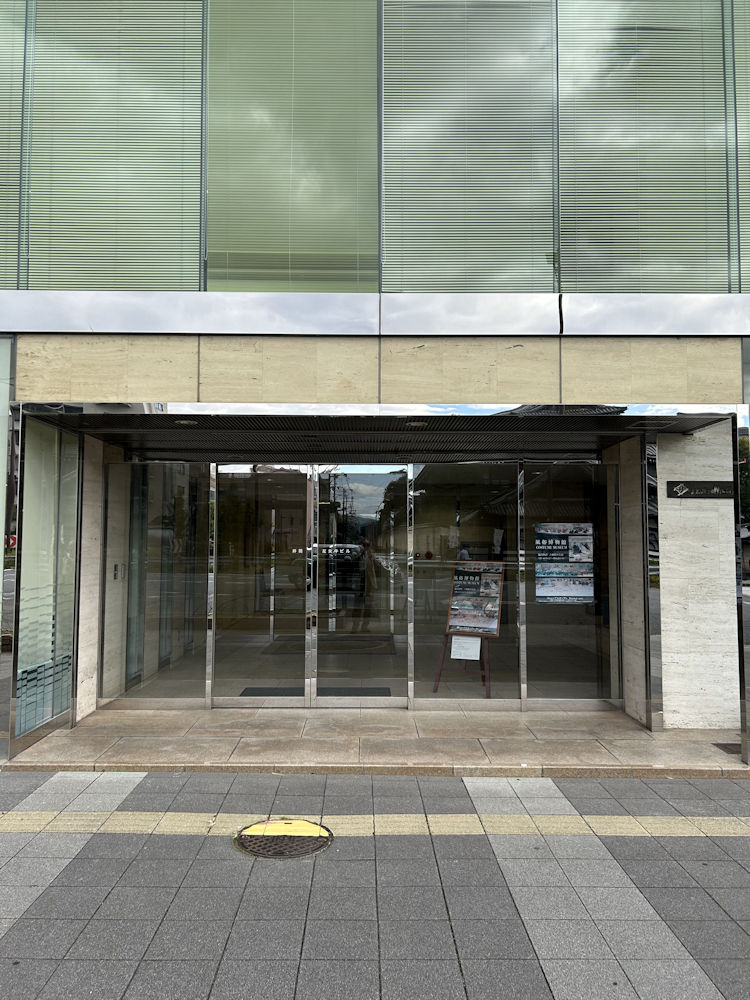
The Fuzoku Museum is located on the 5th floor of an inconspicuous office building. The entrance on the 1st floor had only a small sign.
We arrived at Kyoto Station around midday and set off to find some soba
noodles before heading to the museum. It’s just over a 10-minute walk northeast
from the station to Nishi Hongwanji. Kyoto’s grid layout makes navigation
a breeze. The museum is located in a building just north of Nishi Hongwanji
on Horikawa Street. As we ventured east into the backstreets in search
of a soba place I found on my iPhone, we were surrounded by shops selling
Buddhist prayer beads and robes. One building that caught my eye was a
slightly Western-style dome structure.
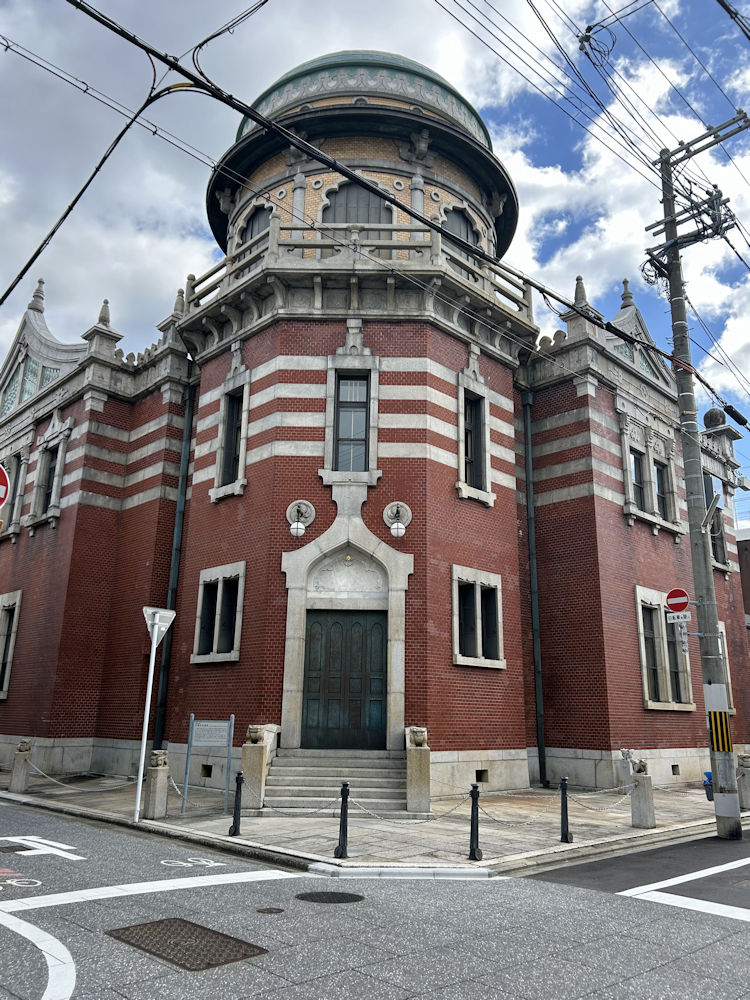
One building that caught my eye was a slightly Western-style dome structure.This was was originally the head office of a life insurance company established for the members of Nishi Hongwanji’s congregation. It is now used as Nishi Hongwanji’s missionary center.
An information board by the side of the entrance at the corner informed us that the building designed by Chuta Ito and built in 1912 was originally the head office of a life insurance company established for the members of Nishi Hongwanji’s congregation. It is now used as Nishi Hongwanji’s missionary center. Ito was a disciple of Kingo Tatsuno, renowned for designing Tokyo Station and the main building of the Bank of Japan. Finding such a Western-inspired building in a Buddhist area near Nishi Hongwanji was a surprise. It likely reflects the influence of mosque-like Islamic architecture on 19th-century European designs. An information board indicated the building's design showcases Chuta Ito’s "Architectural Evolution Theory," combining classical style with Saracen and traditional Japanese elements. The Nishi Hongan-ji website (https://www.hongwanji.kyoto/en/) offers some information of the building in English.
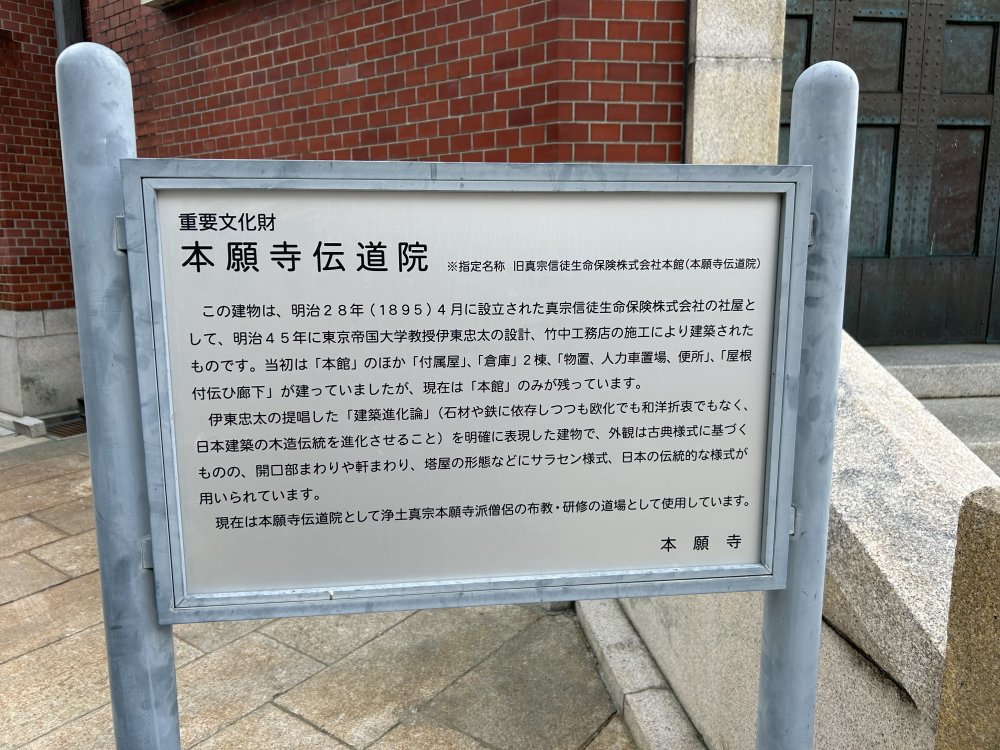
The information board at the corner.
The soba restaurant located roughly halfway between Nishi Hongwanji and Higashi Honganji (It may seem strange that the English spelling for 本願寺 of the two temples are different, but that’s according to their official website) we had planned to visit was closed. There were others outside also disappointed, suggesting it was an unexpected closure. Recovering from the dismay, we relied on my smartphone and discovered another place serving a popular Kyoto soba dish, nishin soba.
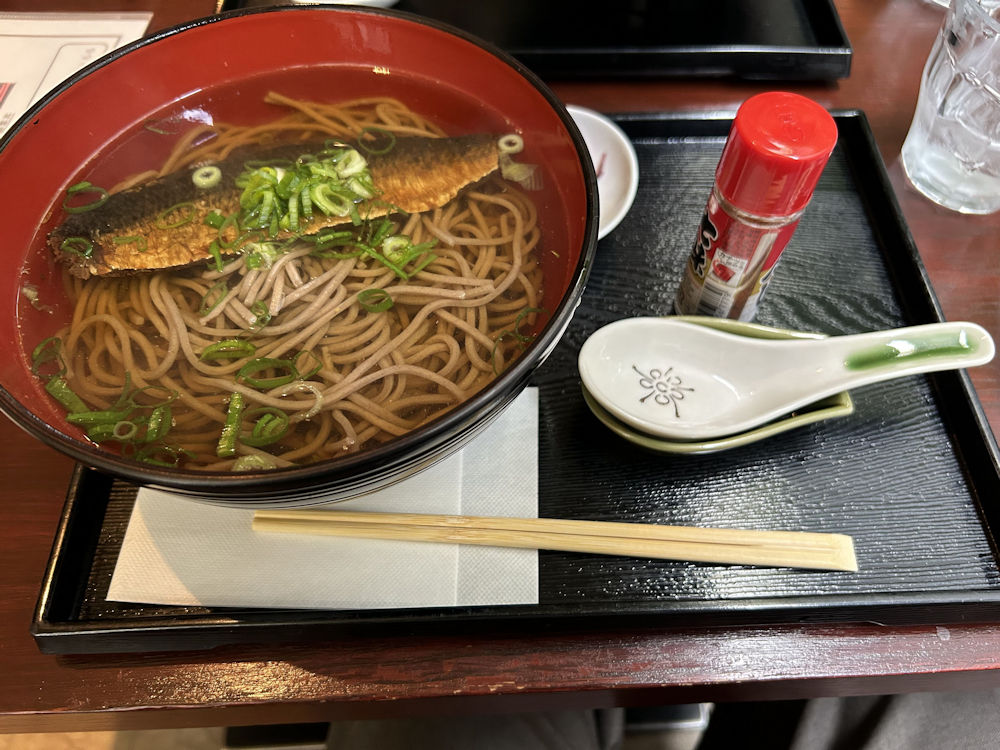
Nishin soba(Herring soba) is a simple dish consisting of sweetened dried herring known as Migaki herring served on top of warm soba noodles. Although originally a Hokkaido dish, it has become popular in Kyoto as well. The red object is a small bottle of chili powder which goes well with nishin soba.
To our surprise, the restaurant was right across from Nishi Hongwanji. At first glance, it appeared to be a shop selling pickles and other gifts, so we had walked past, not realizing a restaurant was hidden at the back.
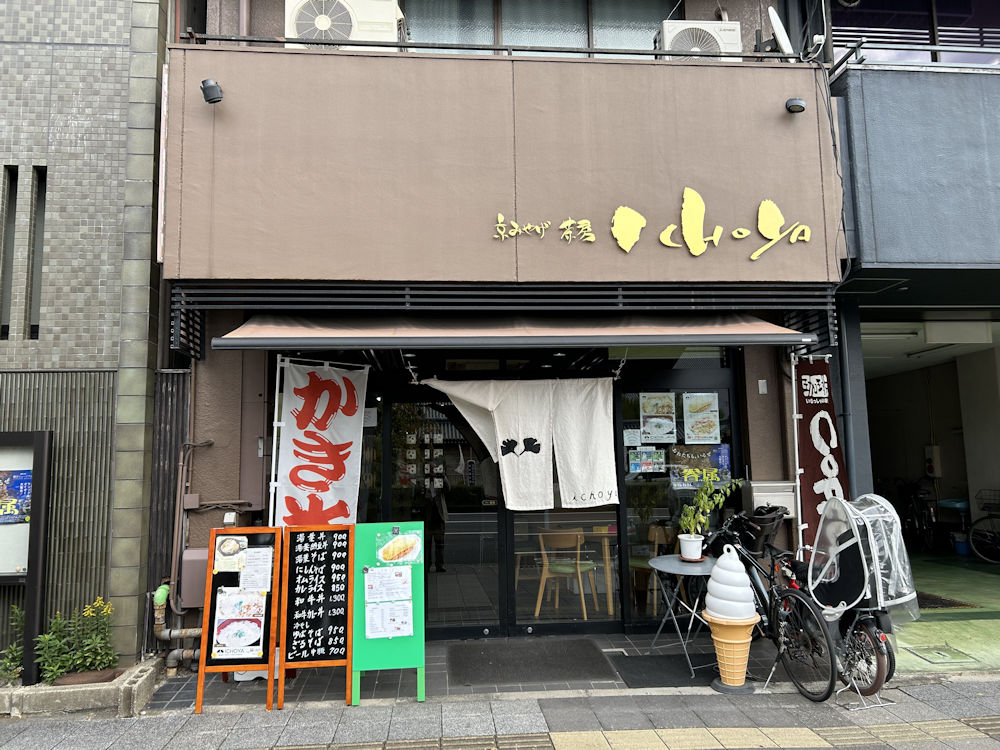
To our surprise, the restaurant was right across from Nishi Hongwanji.
After finishing our nishin soba, we headed to the Fuzoku Museum. We knew it was on the 5th floor of a building, but the entrance on the 1st floor had only a small sign. To our surprise, when the elevator doors opened, it seemed like the museum was the only tenant on the 5th floor. As the doors opened, we were greeted by a miniature world of The Tale of Genji. My wife recently developed an interest in The Tale of Genji and Heian-era aristocratic architecture, so I joined her without expecting much. However, I was unexpectedly drawn in. The entire floor is dedicated to miniature scenes from The Tale of Genji. You walk around the exhibit, which is rearranged from time to time. On this occasion, the display of the December Buddhist ceremonies were particularly interesting. These ceremonies involve repenting for the year's sins and vowing to do good deeds, with vivid depictions of the horrors of hell for those who failed to comply. Compared with the detailed Japanese explanations, English descriptions were provided mainly for the dolls only, but I felt the overall message would still be understandable to non-Japanese visitors. There were also explanations of the changes in Heian-era clothing as well as full-sized costume displays, making the ¥800 admission fee quite reasonable. I highly recommend this exhibit for anyone visiting the Nishi Hongwanji area or interested in Heian culture as depicted in the Tale of Genji.
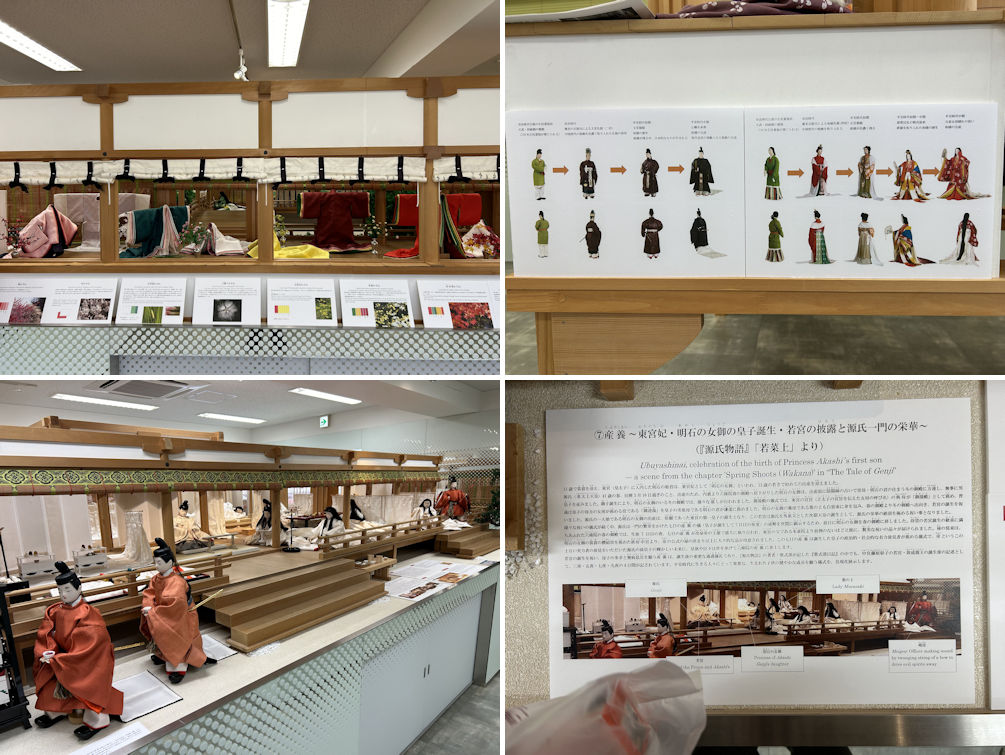
(Upper left) Detailed explanation of the layers of kimono comprising the juunihitoe (official court ladies' attire). (Upper right) Diagram showing the changes in ladies' and men's clothing from the pre-Nara period to the middle of the Heian period. (Lower left) Display of the celebration of the birth of Princess Akashi's first son, and (lower right) the detailed Japanese explanations. The English descriptions were mainly for the title and dolls only, but I felt the overall message in English was still understandable.
With some time to spare before our Shinkansen ride back to Tokyo, we decided
to revisit Nishi Hongwanji. This temple belongs to the Jodo Shinshu sect
of Buddhism, founded by Shinran, a disciple of Honen Shonin, between the
late 12th and early 13th centuries. Jodo Shinshu is primarily divided into
the Hongwanji sect, headquartered at Nishi Hongwanji, and the Otani sect,
headquartered at Higashi Honganji. This division originated from family
succession disputes, leading to alignments with different historical figures—the
Hongwanji sect with Oda and Toyotomi, and the Otani sect with the Tokugawa.
According to the Agency for Cultural Affairs’ 2023 Religious Yearbook,
as of the end of 2022, there were 71 million Buddhists, 84 million Shinto
followers, and 1 million Christians in Japan. The sum of these three religions
of 156 million exceeds Japan's total population of 126 million. This is
due to the fact that the numbers are based on the number of followers declared
by the religious organizations governed by the Agency (religious organizations
must be authorized by the Agency to gain special treatment such as tax
exemptions). The numbers must be used with caution as (a) the declared
number of individuals may not necessarily mean that they are active members,
and (b) that many Japanese may be a supporter (ujiko) of some Shinto shrine
while at the same time being a member of a Buddhist congregation (danka).
The statistics are still useful showing the general trend of religious
organizations in Japan. According to the Yearbook, Jodo Shinshu, combining
both the Nishi and Higashi branches, was the largest single Buddhist sect
in Japan, with 14 million followers. Nichiren Buddhism followed with 10
million, Jodo Shu with 6 million, and various Zen sects with 5 million
in total.
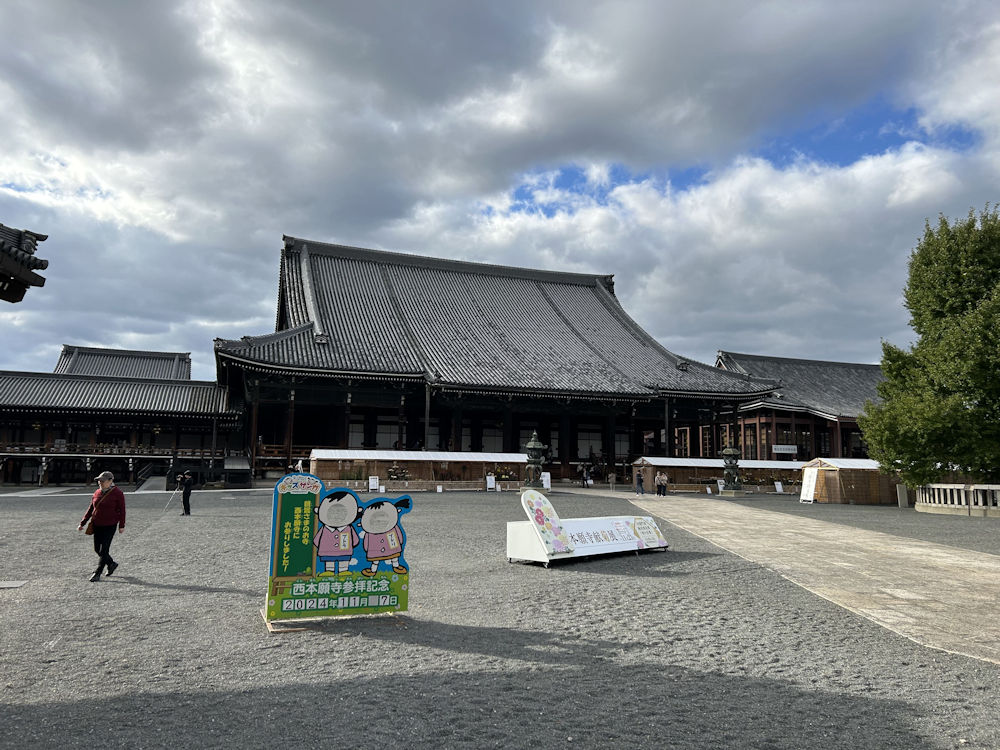
The present 25 meters height Amidado building reconstructed in 1760 and designated a National Treasure. Customary for November, a chrysanthemum exhibition was being held in front of the Amidado.
Nishi Hongwanji is one of the 17 properties that make up the Historic Monuments of Ancient Kyoto, designated as a UNESCO World Heritage Site in 1993. The name "Honganji (real wish temple)" derives from the teachings of Shinran, the founder of Jodo Shinshu Buddhism, who encouraged the realization of Amida Buddha's real wish. The origin of Honganji was the mausoleum of Shinran, who passed away in 1263. The mausoleum was maintained in various locations around Kyoto until the 14th century when it officially adopted the name of Honganji. The teachings spread nationwide during the time of the 8th Chief Priest, Rennyo, in the mid-15th century. The popularity of Honganji led to conflicts with other Buddhist sects, and in the 16th century, it was forced to move to Osaka. This was the famous but now lost Ishiyama Honganji (its estimated location is on the grounds of the current Osaka Castle site). In 1591, Hideyoshi Toyotomi granted the current site in Kyoto as an offering to Honganji, and the temple complex was developed, reaching its near-present form in the 1630s. The main buildings of the temple complex are the Goeido (Founder’s Hall), which enshrines a wooden statue of Shinran Shonin, and the Amidado (Hall of Amida Buddha), with a wooden statue of Amida Buddha at its center. The tradition of having a separate hall as the Goeido side by side with the Amidado stems from the temple’s origins as Shinran's mausoleum.
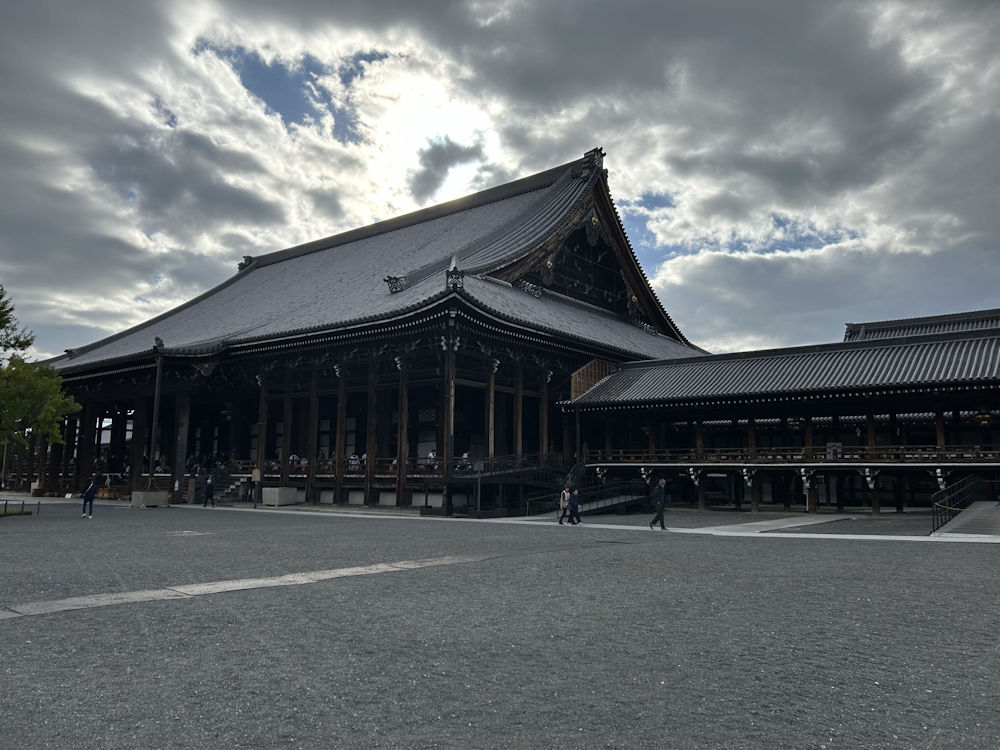
The present Goeido reconstructed in 1636 and designated as a National Treasure. The Goeido is 29 meters tall and is larger than the Amidado. The tradition of having a separate hall as the Goeido side by side with the Amidado stems from the temple’s origins as Shinran's mausoleum.
While Nishi Hongwanji is home to many cultural assets designated as National
Treasures, only the Goeido, Amidado, and Karamon Gate are open to the public
year-round. The Shoin building, including its National Treasure-designated
Taimensho (special reception hall), Shiroshoin (main reception hall), and
Kuroshoin (private reception hall), as well as the North Noh stage and
the Momoyama-style Hiunkaku, are generally not open to the public except
during limited periods. With the holiday weekend just behind us, the temple
grounds were quiet and peaceful.
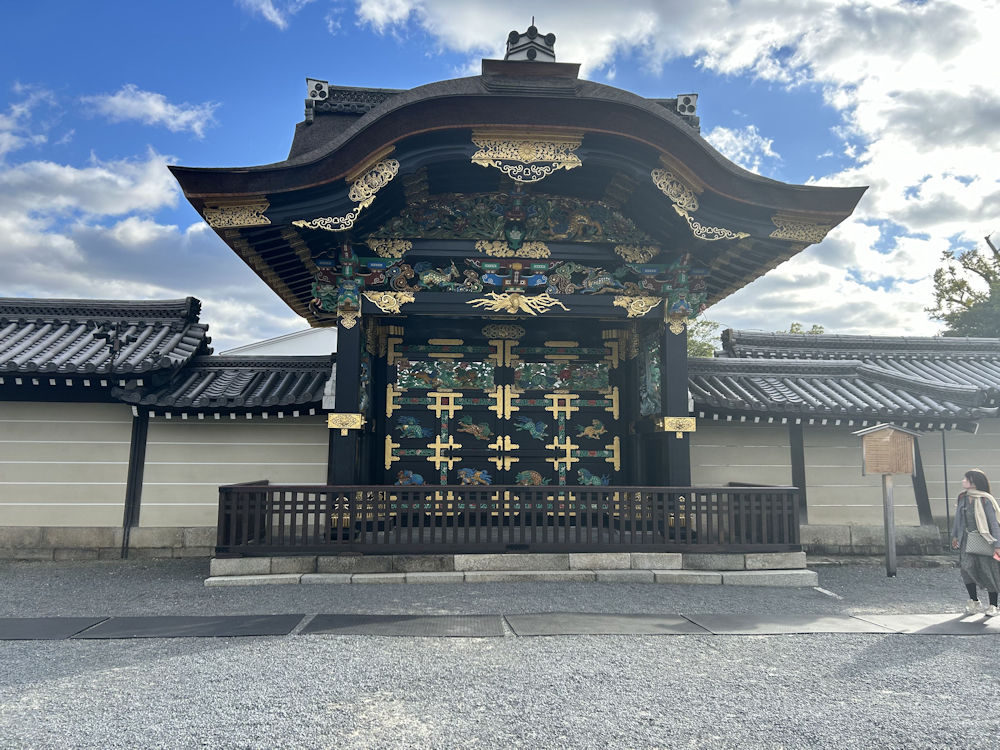
The four-pillared Karamon Gate demonstrates a lavish Momoyama style architecture from the late 16th century.
Nishi Hongwanji has two east-facing gates: the Amidado Gate to the north
and the Goeido Gate to the south. Exiting through the Goeido Gate, you'll
see the Main Gate across Horikawa Street. Beyond the Main Gate, a short
temple town emerges with shops selling monk's robes and prayer beads.
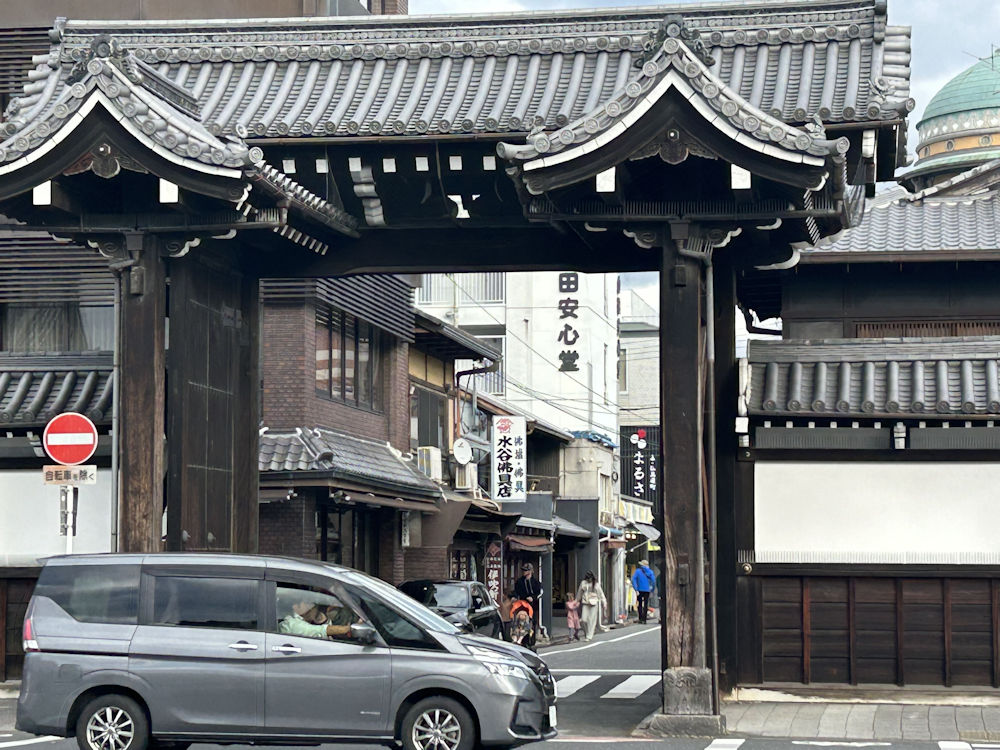
The Main Gate across Horikawa Street as viewed from the Nishi Hongwanji side. Beyond the Main Gate, a short temple town emerges with shops selling monk's robes and prayer beads.
To the right (looking from the Nishihongwanji side) of the Main Gate stands
the Ryukoku Museum. Ryukoku University, originally an educational institution
for Nishi Hongwanji monks, founded this Buddhist museum in 2011 as part
of its 370th-anniversary celebrations. At the time of my visit, the museum
was hosting the "Attendant Deities of the Buddhas Exhibition."
As the theme sounded interesting, I decided to pay a visit. The special
exhibition's entry fee was quite high at 1,600 yen, but the focus on Buddhist
attendant figures was well-explained and engaging. If you're interested
in the exhibition they are hosting at the time and you have time, a visit
might be worthwhile. Even spending just half a day here made me appreciate
the abundance of sightseeing spots in Kyoto anew.
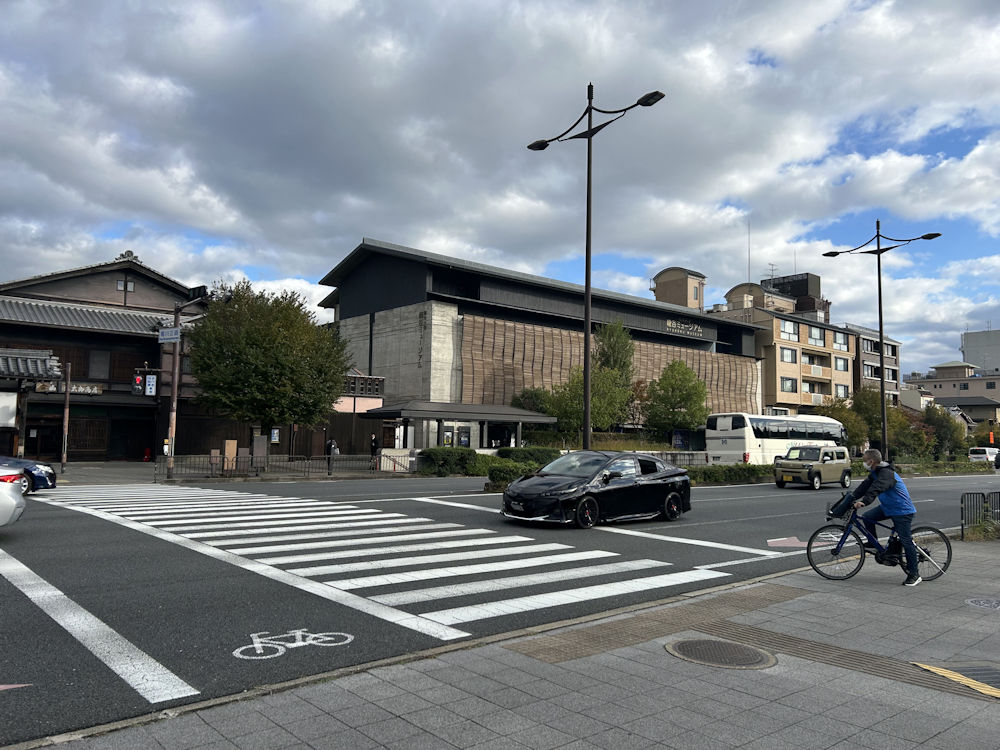
The Ryukoku Museum may be an interesting place to visit if you are in the area and have interest in their exhibition.